#omega-3 fatty acids found in fatty fish like salmon and tuna can reduce the risk of developing macular degeneration and dry eye syndrome (g
Text
The Role of Nutrition in Eye Health: Foods That Support Vision
A balanced diet that includes nutrients beneficial to eye health can help maintain good prevent eye diseases (best hospital in Jaipur) . Vitamins A, C, and E, as well as minerals such as zinc and copper, have been linked to eye health (multispeciality hospitals in mansarovar) . Consuming foods rich in these nutrients, such as leafy greens, carrots, sweet potatoes, citrus fruits, nuts, and fish, can help promote healthy vision (gynacologist hospital in Jaipur).
Additionally, omega-3 fatty acids found in fatty fish like salmon and tuna can reduce the risk of developing macular degeneration and dry eye syndrome (gynacologist hospital in Jaipur). Lutein and zeaxanthin, found in leafy greens and eggs, have also been shown to benefit eye health (Cardiology hospital in Jaipur) .
#A balanced diet that includes nutrients beneficial to eye health can help maintain good prevent eye diseases (best hospital in Jaipur) . Vi#C#and E#as well as minerals such as zinc and copper#have been linked to eye health (multispeciality hospitals in mansarovar) . Consuming foods rich in these nutrients#such as leafy greens#carrots#sweet potatoes#citrus fruits#nuts#and fish#can help promote healthy vision (gynacologist hospital in Jaipur).#Additionally#omega-3 fatty acids found in fatty fish like salmon and tuna can reduce the risk of developing macular degeneration and dry eye syndrome (g#found in leafy greens and eggs#have also been shown to benefit eye health (Cardiology hospital in Jaipur) .
0 notes
Text
Omega-6 Fatty Acids: A Comprehensive Guide to the Good, the Bad, and the Balanced

Omega-6 fatty acids are a type of polyunsaturated fat that is essential for human health. They play a role in a variety of bodily functions, including inflammation, blood pressure, and blood clotting. However, too much omega-6 fatty acids can lead to inflammation and other health problems.
The Good
Omega-6 fatty acids are necessary for the production of prostaglandins, which are hormone-like substances that regulate a variety of bodily functions. Prostaglandins can be both beneficial and harmful, depending on the type. For example, some prostaglandins help to reduce inflammation, while others promote inflammation.

Omega-6 fatty acids also play a role in cell growth and development, and they are important for the health of the skin, hair, and nails. Additionally, omega-6 fatty acids are a source of energy for the body.
The Bad
While omega-6 fatty acids are essential for human health, too much can lead to inflammation. Inflammation is a normal process that helps the body to heal from injury and infection. However, chronic inflammation can lead to a number of health problems, including heart disease, cancer, Alzheimer's disease, and arthritis.
The Western diet is typically high in omega-6 fatty acids and low in omega-3 fatty acids. This imbalance can lead to inflammation and other health problems. Omega-6 fatty acids are often found in processed foods and unhealthy vegetable oils, such as soybean oil, corn oil, and canola oil.
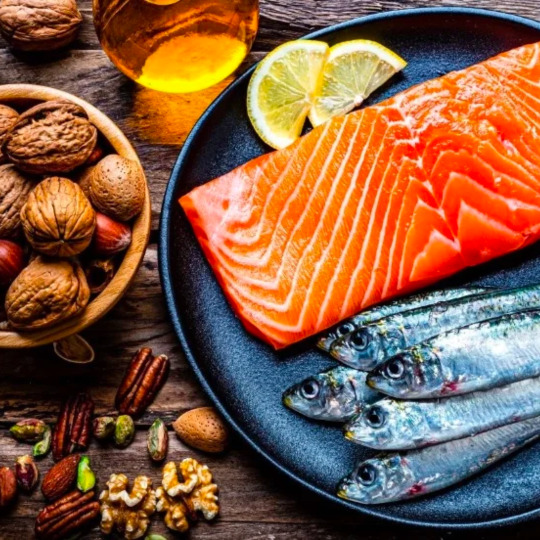
The Balanced
The key to getting the most out of omega-6 fatty acids is to consume them in moderation. The following tips can help you to achieve a healthy balance of omega-6 and omega-3 fatty acids in your diet:
Choose healthy sources of omega-6 fatty acids, such as walnuts, almonds, and flaxseeds. These foods contain a type of omega-6 fatty acid called alpha-linolenic acid (ALA), which is less inflammatory than other types of omega-6 fatty acids.
Limit your intake of processed foods, which are often high in unhealthy omega-6 fatty acids.
Increase your intake of omega-3 fatty acids, which can help to reduce inflammation. Good sources of omega-3 fatty acids include fatty fish, such as salmon, tuna, and mackerel, as well as flaxseeds and chia seeds.
Aim for a ratio of omega-6 to omega-3 fatty acids of 4:1 or less. This can be difficult to achieve with the typical Western diet, but it is important to make an effort to get as close as possible.
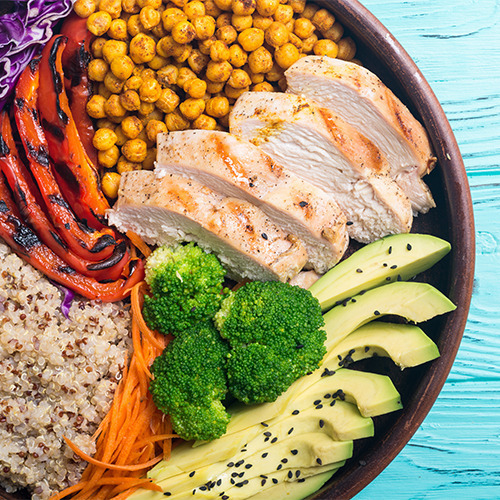
Additional Tips
Here are some additional tips for reducing your intake of omega-6 fatty acids and increasing your intake of omega-3 fatty acids:
Cook with healthy oils, such as olive oil or avocado oil.
Avoid fried foods.
Eat more whole foods, such as fruits, vegetables, nuts, and seeds.
Choose grass-fed beef and lamb instead of grain-fed beef and lamb.
Take an omega-3 supplement if you don't eat fatty fish regularly.
By following these tips, you can help to ensure that you are getting a healthy balance of omega-6 and omega-3 fatty acids in your diet.
Conclusion
Omega-6 fatty acids are an essential part of a healthy diet. However, it is important to consume them in moderation and to balance your intake with omega-3 fatty acids. By following the tips above, you can help to ensure that you are getting the most out of omega-6 fatty acids and reducing your risk of chronic diseases.

How Omega-6 Fatty Acids Affect Your Mood (And What You Can Do About It)
Omega-6 fatty acids are polyunsaturated fatty acids that are essential for human health. They are found in a variety of foods, including vegetable oils, nuts and seeds, fatty fish, and meat and poultry. Omega-6 fatty acids play a role in many important bodily functions, including cell growth, inflammation, and hormone production.
There is growing evidence that omega-6 fatty acids may also play a role in mood. For example, one study found that people with higher levels of omega-6 fatty acids in their blood were more likely to experience symptoms of depression and anxiety. Another study found that taking omega-6 fatty acid supplements improved mood in people with depression.
The exact mechanism by which omega-6 fatty acids affect mood is not fully understood. However, it is thought that they may do so by:
* Affecting the production of neurotransmitters, such as serotonin and dopamine
* Reducing inflammation in the brain
* Promoting the growth and repair of nerve cells
It is important to note that the research on the relationship between omega-6 fatty acids and mood is still ongoing. More research is needed to determine the optimal intake of omega-6 fatty acids for mood health.
However, there are some things you can do to make sure you are getting a healthy balance of omega-6 fatty acids in your diet:
* Choose plant-based oils that are high in monounsaturated fats, such as olive oil and avocado oil.
* Limit your intake of processed foods, which are often high in omega-6 fatty acids and inflammatory ingredients.
* Eat plenty of fruits, vegetables, and whole grains.
* Include fatty fish in your diet at least two times per week.
* Consider taking an omega-3 fatty acid supplement. Omega-3 fatty acids can help to balance the effects of omega-6 fatty acids in the body.
If you are concerned about your mood or mental health, talk to your doctor. They can help you to assess your diet and lifestyle and make recommendations to improve your overall health and well-being.
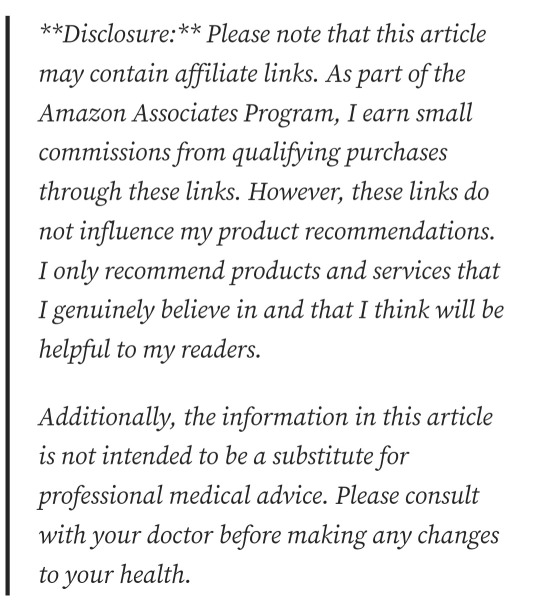
#healthy#health#healthcare#help#headlines today news#headline news#self healing#heartbreak#healthy diet#trends#natural remedy#long reads#reading#education#weight loss diet#world news#black and white#world#writing#latest news#business news#nutritious#breaking news#nature#news#money#antioxidants#science#diet plan#low cal diet
2 notes
·
View notes
Text
5 ways to improve your joint health
If your joints are in good working order, you may not give them much thought; however, taking control of your joint health is critical for keeping them strong, healthy, and pain-free. According to the Centers for Disease Control and Prevention (CDC), arthritis, a condition that causes pain, swelling, and stiffness in your joints, is the leading cause of disability in the United States. Fortunately, many of the best ways to improve your joint health and lower your risk of debilitating stiffness and pain are the same lifestyle changes you’re thinking about for your overall health. Here are five of the most effective things you can do.
1. Be active.
In people with arthritis, regular exercise improves joint function, delays disability, and reduces pain. The CDC recommends 30 minutes of moderate-intensity exercise five days a week to improve joint health. Swimming and brisk walks, according to Dr. Mario Lee, an orthopaedic surgeon at Reid Orthopedic Center, are the best exercises for your hips, knees, and lower back. Low-impact exercises are gentler on your joints than high-impact workouts. Dr. Lee compares the effects of low-impact and high-impact exercise on your joints to “a car driven only on the highway versus one driven in the city.” Tires on a highway-driven car will last much longer than those on a city-driven car that must navigate potholes and stop-and-go traffic.” According to the American Academy of Orthopaedic Surgeons, other joint-friendly exercises include cycling, stretching, and light weightlifting. Because some types of exercise can put more strain on your joints, always consult your doctor before starting a new exercise programme.
2. Maintain a healthy weight.
Obesity and overweight place additional strain on your joints, particularly your knees, increasing your risk of osteoarthritis and other joint disorders. According to Harvard Health Publications, gaining weight increases inflammation, which can contribute to joint problems in your hands and knees. Obesity and overweight place additional strain on your joints, particularly your knees, increasing your risk of osteoarthritis and other joint disorders. According to Harvard Health Publications, gaining weight increases inflammation, which can contribute to joint problems in your hands and knees.
3. Boost your vitamin E and omega-3 fatty acid intake.
According to MedlinePlus, getting enough of these nutrients is important for joint health, and they can be found in a variety of foods. Snack on nuts and seeds like walnuts and pumpkin seeds. Sprinkle flax seeds on yoghurt, oatmeal, and salads. Instead of using butter, cook with canola or sunflower oil. Incorporate walnut, pumpkin seed, or hemp oils into sauces or low-heat baking recipes, or lightly sauté foods in these oils. Consume two servings of omega-3-rich fish per week, such as salmon, sardines, tuna, lake trout, herring, or anchovies.
4. Quit smoking.
A study published in Annals of the Rheumatic Diseases found that smoking is a preventable risk factor for developing rheumatoid arthritis — and that the more you smoke, the higher your risk.
5. Get plenty of sleep.
A good night’s sleep is essential for maintaining healthy joints. According to My health Centre Point, if you have arthritis, sleeping eight to ten hours at night and taking naps during the day can help you recover from joint flare-ups faster. Unfortunately, many Americans do not get enough sleep. If you are one of them, having a regular bedtime can help you meet your sleep needs.
It may appear that caring for your joints on top of any other health concerns is a tall order, but Dr. Lee notes that anything that benefits your overall health is also beneficial for your joints.
2 notes
·
View notes
Photo

9 Foods To Eat For Weight Loss
9 Foods To Eat For Weight Loss
1. Vegetables
Vegetables of all kinds can assist with weight loss, says Feit. For example, cruciferous vegetables like broccoli, cauliflower, Brussels sprouts and cabbage are high in fiber and vitamins and help reduce digestive issues. Meanwhile, dark green leafy vegetables contain protein and are a good source of vitamins, minerals and fiber. And crunchy vegetables like celery and jicama are great low-calorie options for snacking.
2. Salmon
Fatty fish like salmon are incredibly nutritious and very satisfying.
Salmon is loaded with high quality protein, healthy fats, and various important nutrients. That combination keeps you satiated and can help you reach a healthier weight.
Salmon is loaded with omega-3 fatty acids, which may help reduce inflammation. Inflammation plays a major role in obesity and metabolic disease.
What’s more, fish — and seafood, in general — may also supply a significant amount of iodine.
The nutrient is necessary for proper thyroid function, which is important to keep your metabolism running optimally
But studies show that a significant number of Adding fatty fish to your diet can help you consume enough iodine
Mackerel, trout, sardines, herring, tuna, and other types of fatty fish are also excellent for your health.
3. Grapefruit
Yes, grapefruit really can help you shed pounds, especially if you are at risk for diabetes.
Researchers at Scripps Clinic in San Diego found that when obese people ate half a grapefruit before each meal, they dropped an average of 3 ½ pounds over 12 weeks. Drinking grapefruit juice had the same results.
But grapefruit juice doesn’t have any proven “fat-burning” properties — it may just have helped people feel full.
Be careful: You cannot have grapefruit or grapefruit juice if you are on certain medications, so check the label on all your prescriptions, or ask your pharmacist or doctor
4. Apples
These marvels of nature deserve their reputation for keeping the doctor away when you eat one a day. And now, it seems, they can help you melt the fat away, too.
First of all, they elevate your blood glucose (sugar) levels in a safe, gentle manner and keep them up longer than most foods. The practical effect of this is to leave you feeling satisfied longer, say researchers.
Secondly, they’re one of the richest sources of soluble fiber in the supermarket. This type of fiber prevents hunger pangs by guarding against dangerous swings or drops in your blood sugar level, says Dr. James
Anderson of the University of Kentucky’s School of Medicine.
An average size apple provides only 81 calories and has no sodium, saturated fat or cholesterol. You’ll also get the added health benefits of lowering the level of cholesterol already in your blood as well as lowering
your blood pressure.
5. Mustard
Try the hot, spicy kind you find in Asian import stores, specialty shops and exotic groceries. Dr. Jaya Henry of Oxford Polytechnic Institute in England, found that the amount of hot mustard normally called for in Mexican, Indian and Asian recipes, about one teaspoon, temporarily speeds up the metabolism, just as caffeine and the drug ephedrine do.
“But mustard is natural and totally safe,” Henry says. “It can be used every day, and it really works. I was shocked to discover it can speed up the metabolism by as much as 20 to 25 percent for several hours.” This can result in the body burning an extra 45 calories for every 700 consumed, Dr. Henry says.
6. Rice
An entire weight-loss plan, simple called the Rice Diet, was developed by Dr. William Kempner at Duke University in Durham, North Carolina. The diet, dating to the 1930’s, makes rice the staple of your food Intake. Later on, you gradually mix in various fruits and vegetables.
It produces stunning weight loss and medical results. The diet has been shown to reverse and cure kidney ailments and high blood pressure.
A cup of cooked rice (150 grams) contains about 178 calories — approximately one-third the number of calories found in an equivalent amount of beef or cheese. And remember, whole grain rice is much better
for you than white rice.
7. Berries
This is the perfect weight-loss food. Berries have natural fructose sugar that satisfies your longing for sweets and enough fiber so you absorb fewer calories that you eat. British researchers found that the high content of insoluble fiber in fruits, vegetables and whole grains reduces the absorption of calories from foods enough to promote width loss without hampering nutrition.
Berries are a great source of potassium that can assist you in blood pressure control. Blackberries have 74 calories per cup, blueberries 81, raspberries 60 and strawberries 45. So use your imagination and enjoy the berry of your choice.
8. Fish
The health benefits of fish are greater than experts imagined — and they’ve always considered it a health food.
The calorie count in the average four-ounce serving of a deep-sea fish runs from a low of 90 calories in abalone to a high of 236 in herring. Water-packed tuna, for example, has 154 calories. It’s hard to gain weight eating seafood.
As far back as 1985, articles in the New England Journal of Medicine showed a clear link between eating fish regularly and lower rates of heart disease. The reason is that oils in fish thin the blood, reduce blood pressure and lower cholesterol.
9. Tea
Yeah, Its a very good thing for weight loss, But you do not have to drink only tea, you just have to do one thing with your tea, if you want to loss weight then you have to use Tea Burn in your tea every morning.
What Is Tea Burn
Tea Burn is one of the health supplements that has helped many users to lose weight effectively and naturally. The creators of the Tea Burn supplement claim it is a safe formula that contains natural ingredients known to be effective in unwanted weight loss.
Various Tea Burn reviews mention that it is an all-natural powder formula that boosts fat metabolism, boosts energy production, and offers numerous health benefits. The best part of this health supplement is that it works naturally in the body to burn unwanted fat cells and help one have a slimmer and fit body.
It is one of the best weight loss supplements that you can mix with your food, Tea, water, or any other beverages as per your wish. No matter whether you want to get rid of stubborn belly fat or overall body fat, this fat burner is like a magic formula for you.
It does not have any flavor; without experiencing any of its bad or awkward taste, you can boost metabolism and energy levels, further helping you lose weight.
There is no other weight loss formula Tea Burn, backed with thousands of Tea Burn reviews. It is a 100% safe formula made up of pure ingredients that also help you reduce the appetite to further aid in weight loss.
Natural ingredients like green tea extract, chlorogenic acid, essential amino acid, l carnitine, and l theanine, added by the manufacturer in Tea Burn powder, are scientifically proven to assist you in weight loss.
According to the official website of Tea Burn, it is manufactured under safety standards and GMP practices. This Tea Burn formula is gluten-free and a suitable option for vegan people to add to their daily vegan healthy diet.
How Does Tea Burn Works?
Using an all-natural composition, Tea Burn works to promote weight loss and increase levels of metabolism in the body. Many people familiar with the daunting process of losing weight are already used to green tea and so on. Any good advertising agency of such products focuses mainly on the pro-metabolism effects of these natural supplements.
Green tea extract is the prime ingredient of Tea Burn and it is one of the most effective Tea Burn ingredients. Green tea extract is an excellent fat burner and it keeps the fat away. Tea Burn reviews note that Tea Burn keeps the extra weight away by preventing hunger pangs.
Tea Burn is clinically proven to increase metabolism and contribute to higher energy levels. The Tea Burn formula helps in burning fat quicker and preventing you from craving unwanted foods that lead to weight gain.
As per information available in the press release put out by the advertising agency of the manufacturers, Tea Burn has a patent-pending nutritional complex that supplements all of your body’s needs and promotes overall well-being. This is one of the website’s selling points. Tea Burn increases the ability of your body to drop weight naturally.
Side Effects of Using Tea Burn
There are not many side effects of using this supplement as it uses naturally sourced ingredients and does not contain any artificial additives. According to the official website, it is important to consult with your physician as you cannot take any information available online to constitute advice that is capable of replacing that of the opinion of a seasoned professional.
Even though many studies including a string of placebo test studies conducted by the national center have certified the product as safe to use, your personal body needs are not the same as everyone else’s which is why it is important to take medical advice before using any supplement including Tea Burn.
That being said, no Tea Burn review by any real customers has reported any side effects. It is safe to use for healthy adults at their own risk.
Our research and editorial team recommends that the product not be used by pregnant women or children. It is also not suitable for lactating mothers.
How to Take Tea Burn
The mode of taking Tea Burn is through hot or cold tea. Users need to add the formula to hot or cold tea, and then drink it daily a “super tea” that delivers increased weight loss benefits.
According to the creator, users should pour the contents of a single packet of Tea Burn into their tea each morning. They can enjoy the tea as normal with or without food.
Tea Burn contains caffeine, which makes it suitable for morning intake instead of afternoon or evening use. Besides, users can add Tea Burn to other beverages such as shakes, water, and other preferred beverages.
How Much Weight Can You Lose with Tea Burn?
As stated on the official website, scores of users have lost substantial amounts of weight with Tea Burn. One user claimed she “dropped 42 pounds” after using Tea Burn. Similarly, many other users said they lost significant weight with the formula without changing their diet, exercise habits, or putting any effort.
Overall, the creators of Tea Burn believe the formula works as advertised. They recommend it for creating rapid, powerful, and significant weight loss results in any person who takes it.
Pricing of Tea Burn
The most important factor that one considers while buying any product is its price. The creators have focused on making affordable and valued products. To buy Tea Burn, you don’t have to spend hundreds of dollars or burn a hole in your pocket. It is an affordable weight loss formula.
According to the official website, there are three different pricing packages available to purchase Tea Burn. You can choose any of the below packages, considering your budget and requirement.
Buy one pouch of Tea Burn at the cost of $49. Each pouch comes with a 30 days supply which means 30 packets. One packet has to be consumed every day to gauge maximum effects.
Buy three pouches at the cost of $39 per pouch for 90 days supply with free shipping charges.
Buy six pouches at the cost of $34 per pouch for 180 days supply with free shipping.
Remember to buy Tea Burn from its official website only; it is not available at any third-party website. All websites selling Tea Burn are selling fraud and poor-quality products. Only its manufacturer is authorized to sell this product on its official website.
What If Tea Burn Does Not Work For Me
The best part of buying Tea Burn is it is backed with a money-back guarantee for 60 days. The company provides a 60 days money-back guarantee on every order; this means you can get a full refund within 60 days of its purchase if you are not happy with the product or don’t see any noticeable results.
The manufacturer does not ask any questions when you request a full refund. The only thing you need to do to claim your refund is filling a refund form. You are expected to return every packet and pouch to the company, and once your return is verified, the company will proceed with the refund procedure.
Where to buy Tea Burn at the lowest price Tea Burn Is a 100 Percent Natural and Made In USA Product
Get Tea Burn From Its Official Website — Click Here
4 notes
·
View notes
Text
Health Benefits of Eating Fresh Fish from the Market
When it comes to enhancing our well-being, what we put on our plates plays a crucial role. Among the plethora of options available, fresh fish stands out as a nutritional powerhouse, offering a myriad of health benefits that are simply fantastic!
Let's take a deep dive into the wonders of incorporating fresh fish from the Fish Market Dorchester, MA into your diet.
Nutrient-Rich Bounty
Fresh fish from the fish market is a treasure trove of essential nutrients that your body craves. Rich in high-quality protein, omega-3 fatty acids, vitamins, and minerals, it serves as a wholesome package for overall health.
Whether you're a fan of salmon's omega-3 goodness or the lean protein punch of cod, the fish market has something to cater to every palate.

Heart Health Harmony
Want to keep your ticker in top shape? Fresh fish from the fish market is your heart's best friend. The omega-3 fatty acids found abundantly in fish like tuna and mackerel are renowned for their ability to lower triglycerides, reduce inflammation, and decrease the risk of heart disease.
By regularly indulging in fish from the fish market, you're not just treating your taste buds but also showering love on your heart.
Brain Boost Brilliance
Who doesn't want a sharper mind and better memory? Fresh fish holds the key to unlocking your brain's full potential. The omega-3 fatty acids, particularly DHA (docosahexaenoic acid), found in fish like trout and sardines, are vital for cognitive function and neurological health.
From boosting concentration to staving off cognitive decline, making fish from the market a staple in your diet can help keep your brain firing on all cylinders.
Mood Magic
Feeling a bit down in the dumps? Fresh fish from the fish market Dorchester, MA might just be the mood-lifting elixir you need. Research suggests that omega-3 fatty acids play a pivotal role in regulating mood and combating depression and anxiety.
By incorporating fish like halibut and herring into your meals, you're not just nourishing your body but also nurturing your emotional well-being.
Bone Building Bonanza
Strong bones are the foundation of a healthy, active life, and fresh fish from the fish market can help fortify them. Fish varieties such as salmon and sardines are rich in vitamin D and calcium, two nutrients crucial for bone health.
By indulging in fish regularly, you're not only supporting your skeletal system but also reducing the risk of osteoporosis and fractures as you age.
Weight Management Wonder
Striving to maintain a healthy weight? Fresh fish can be your ally in the battle of the bulge. With its high protein content and low-calorie density, fish makes for a satisfying yet calorie-conscious choice.
Whether you're aiming to shed a few pounds or simply maintain your current weight, incorporating fish like tilapia and cod from the fish market into your meals can help you achieve your goals without feeling deprived.
Conclusion
The fish market Dorchester, MA isn't just a place to score delicious seafood—it's a hub of health and vitality. By making fresh fish a regular part of your diet, you're not just tantalising your taste buds but also nourishing your body from the inside out.
So, why wait? Head to your nearest fish market today and reel in the goodness for a healthier, happier you!
Source - https://grocery-store-in-ma.blogspot.com/2024/04/health-benefits-of-eating-fresh-fish.html
#grocery store dorchester#grocery store westwood#grocery store dorchester ma#fish market dorchester#grocery store westwood ma
0 notes
Link
#BestFoodsforAHealthyBrain#BestFoodsforBrainHealthandImprovedMemory#BestGoodFoodforBrain#BrainFoods#brainpower#Whatisbestfoodforbrain?
0 notes
Text
How Suitable is Raw Fish For Dogs?
Have you noticed your pooch go stir-crazy at the smell of fish? Have you been tempted to give them a taste but stop yourself because you’re sure how suitable is raw fish for dogs? Well, what you’re faced with is a common dilemma that many pet parents contend with. The short answer is no. Raw fish consumption exposes your dog to parasite risks that can lead to serious health complications. Many dogs may even experience an allergic reaction after consuming uncooked fish. On the other hand, the nutritional value of fish cannot be overlooked.
After all, the high concentration of protein and essential nutrients in fish surely makes it a good contender for a spot in your dog’s food bowl. This is also why it is a common ingredient in ready-to-eat dog food. So, the question you should be asking is: how much and in what form is fresh fish good for dogs? Let’s find out.
Is Fresh Fish Good For Dogs?
If you lean in favor of feeding home-cooked food to your dog, fresh fish is not only good but can also be considered an essential ingredient for a balanced diet. Fresh fish for dogs offers many nutritional benefits, such as:
The Omega-3 fatty acids found in fish can contribute to improved coat and skin health and also have an anti-inflammatory effect on the body
Fish are also rich in Vitamin D – a micronutrient rarely found in foods – which can facilitate the absorption of calcium and phosphorus, resulting in better bone and joint health
Zinc, Vitamins B6, B12, and B13, iron, and iodine keep the nervous system healthy, improve immunity and cardiovascular health
These health benefits make it clear as day that fresh fish for dogs is a great dietary choice. That being said, not all fish types are suitable for your canine companion. In fact, some parasite risks, high mercury content, and risk of poisoning make some varieties of fish absolutely unfit for your pooch’s consumption. That’s why, if you’re considering introducing fresh fish to your dog’s diet, it’s crucial to carefully choose variety and source, and understand what’s the best way to incorporate it in your pet’s diet.
What types of fish can dogs eat?
As I said, not all fish varieties are safe for your dog’s consumption. Fish with a larger lifespan, like mackerel, swordfish, shark, and tuna, tend to have a high toxin content such as heavy metals and mercury, which can make your pet extremely sick. Likewise, if the fish you’re feeding your dog hasn’t been sourced and stored correctly, it can expose your dog to parasites that can cause health complications. Not to mention, if it doesn’t sit right with your pooch, fish can also cause a severe case of food poisoning.
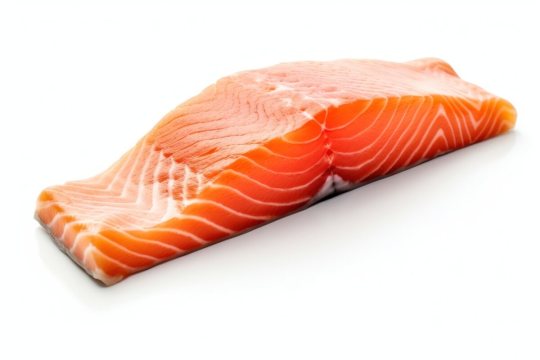
1. Salmon
Nutrient-dense Salmon can be a great addition to your pet’s meal. The omega-3 fatty acids in Salmon work wonders in promoting a shiny coat and good skin health. Its nutritional profile also helps in reducing inflammation and strengthening the immune system. But can dogs eat raw salmon? The answer is no. It not only increases parasite risk but can also put your pet at risk of salmon poisoning, which can prove fatal.
2. Herring
Herring, which is typically found in shallow, temperate waters, is another choice if you’re looking for fresh fish for dogs. It is a great source of vitamin D. Feeding your pooch Herring once a week can help improve teeth, bone, and joint health. For dogs who are allergic to poultry meats, Herring can make a great substitute, as it is cheaper than other fish proteins.
3. Cod
If you’re looking for the best raw fish for dogs, add Cod to the list. Except, it shouldn’t be fed to your dog raw. Being a small fish, it is known to have a low mercury count and fewer toxins. This, along with its nutrient-rich profile, is one of the best fish for dogs’ diet. Even so, it’s crucial to prep it the right way before feeding it to your pet.
4. Flounder
Packed with lean protein, vitamin B, and omega-3s, Flounder is another great addition to your pet’s meal. If you can’t source it fresh, it’s perfectly okay to use the frozen variety. However, this frozen white fish for dogs must be duly poached or steamed before it makes its way to their food bowl.
5. Catfish
Cost-effective and nutrient-rich, the Catfish can make a great addition to your dog’s diet. Its nutrient profile, which includes protein, omega-3s, thiamine, and phosphorus, contributes toward improved cardiovascular health. However, it is also high in fat content, so portion control is crucial.
6. Lake whitefish
A frontrunner for the best fish for dogs to eat, especially if you’re looking for leaner sources of protein to incorporate into your pet’s diet. Belonging to the salmon family, these, too, are extremely rich in protein. But if you’re wondering if you can serve it to your dog uncooked, the answer is the same as can dogs eat raw salmon – NO! Not only is it not a food choice for a raw diet, but it is also extremely important to debone the Lake whitefish before feeding it to your dog to prevent internal injuries, which can often prove fatal.
7. Sardines
Ah, sardines! A favorite among pet parents and dogs alike. These small fish are a great source of protein and also rich in calcium, selenium, coenzyme Q10, vitamin D, and B12, and are known to prevent certain types of cancer as well as gum diseases in dogs.
If you can source raw sardines, and serve them to your dog cooked and deboned, nothing like it. If not, canned variety works just as well. However, when using the canned variety, it’s best to avoid sardines in oils and use ones with water. Alternatively, you can also use frozen sardines for dogs’ meals.
Is Raw Fish Good for Dogs? 5 Hazards to be Mindful Of

Can I feed my dog raw salmon? Is raw fish good for dogs? Can frozen sprats for dogs be used raw? What about frozen sardines for dogs? So many questions… So much information about what types of fish have high mercury content, which don’t, which are easy to digest, which are not, the nutrient profile of each… It can be hard to find a clear takeaway.
So, let me simplify it for you. The answer to all these questions is no. Using raw fish for dogs’ diet is never a good idea. Yes, freshly sourced fish can be a rich and healthy addition to your pooch’s diet, safe sourcing of raw fish and proper preparation techniques are both critical in ensuring that they contribute toward making your furry baby healthier and not put them at unwarranted health risks. And why is that? Let’s take a look at the top hazards of feeding raw fish to dogs:
1. Parasites
As I’ve already mentioned, among the risks and considerations of feeding raw fish, parasites are the front runner. All raw fish can have parasites, among which tapeworms, roundworms, and flukes are the most dangerous to dogs.
It is a variant of flukes found in salmon and other fish native to the Pacific Northwest region that causes Salmon poisoning – the symptoms of which can range from vomiting and diarrhea to swollen lymph nodes, dehydration, extreme weakness, and death if not treated in time. I hope you’re now clear on why the answer to, “Can I feed my dog raw salmon?”, will always be a resounding NO!
2. Bacteria
Whether it is raw sardines, cod, flounder, or frozen sprats for dogs served raw, all fish can carry potentially harmful bacteria such as listeria and salmonella. While not all dogs may become sick after exposure to these bacteria – in part due to their short digestive systems and in part, depending on how strong a dog’s immune system is – it is not worth the risk to try and find out how your pet will respond to being fed raw fish that carries harmful bacteria.
3. Bones in raw fish
The tiny bones in raw fish can not only prove to be a choking hazard for dogs but can also cause injury to the esophagus and stomach, sometimes causing the internal organs in the digestive tract to rupture – which, needless to say, can lead to serious health complications. While the gastric acids in a dog’s digestive system are equipped to soften bones, they may have trouble breaking down fish bones.
4. Presence of mercury
All fish contain some amount of mercury. The bacteria in water convert atmospheric mercury into organic mercury compounds, which get absorbed into fish’s tissue. Excessive mercury exposure can be toxic to dogs, leading to health complications such as:
Loss of body movements
Convulsions
Blindness
Tremors
Abnormal behavior
Risk of lead poisoning
Raw fish also contains other heavy metals such as lead, too much exposure to which can lead to serious consequences such as:
Anemia
Gastrointestinal disorders
Lethargy and anorexia
Neurological changes
The bottom line is, there is no such thing as the best raw fish for dogs. The American Veterinary Medical Association does not recommend raw fish for dogs (or even undercooked fish, for that matter) in any form or at any life stage.
My dog ate raw fish, what do I do?

After learning of the potential risks of raw fish for dogs, it’s natural to worry about what would happen if your dog consumes it inadvertently. “My dog ate raw fish, what do I do?” is a common frantic query of pet parents. Well, first of all, breathe!
Unless your dog has ingested a large quantity of raw fish in a go under some circumstance – as a pet parent, I know the possibility is not far-fetched – it’s unlikely that a one-off incident will hurt their health (barring, of course, the risk of injury or choking due to fish bones). Even so, it helps to be vigilant. Here’s what you can do if your dog consumes raw fish:
Monitor your dog’s health for any symptoms or unusual changes in mannerisms/behavior
If you notice something out of the ordinary, consult your veterinarian
Get all the tests your vet recommends
Follow through the entire course of treatment
The Right Way To Prep And Cook Fish For Dogs
You may have noticed that I’ve been talking a lot about prepping fish the right way before feeding it to your dog. But what is the right way? Let’s find out:
Safe handling of raw fish is paramount. This is equally important whether you’re using frozen fish or freshly sourced. You can follow the FDA guidelines for proper storage of raw fish for humans
Cook, poach, or steam the fish until you reach an internal temperature of 145 degrees Fahrenheit. If the entire batch is not used immediately, it’s important to store the leftovers correctly
Freshly sourced fish should be consumed within two days, so decide the quantity to buy accordingly
Some of the acceptable ways of cooking fish are boiling, roasting, grilling, poaching, steaming, braising, air frying
If left unconsumed at room temperature for over two hours, the portion must be discarded
When introducing fish to your dog’s diet, monitor your dog for any symptoms of gastrointestinal discomfort such as refusing to eat, diarrhea, vomiting
Making informed decisions about your dog’s diet is a crucial aspect of ensuring their well-being and good health. I hope this article offered you relevant insights about whether or not fish would be right for your pooch’s diet, and if so, how to incorporate it for optimal benefits. As with any new food item, start with small portions and build up gradually. And don’t overlook the importance of moderation in feeding fish to your dog. Overdoing it can do more harm than good.
Ref:- https://momwithdog.com/raw-fish-for-dogs/
0 notes
Text
Achieving Holistic Health through Anti-Inflammatory, Gut Healing, and Flora Balance
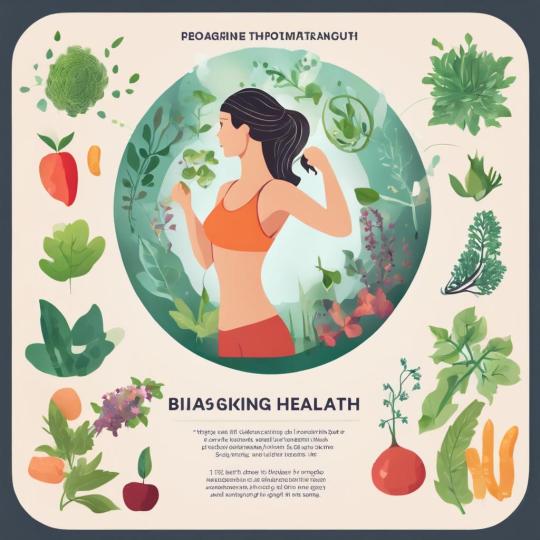
In today's fast-paced world, maintaining optimal health can be a challenge. However, by adopting a holistic approach that focuses on anti-inflammatory practices, gut healing, and flora balance, you can significantly improve your overall well-being. In this article, we will explore these concepts in detail and provide you with practical tips for incorporating them into your daily life.
Understanding Inflammation:
Inflammation is a natural response by our body's immune system to fight off infection or injury. However, chronic inflammation can lead to various health issues such as autoimmune diseases, digestive disorders, and even mental health problems. By incorporating anti-inflammatory practices into your lifestyle, you can reduce the risk of these conditions and promote overall health.
Anti-Inflammatory Foods:
One of the most effective ways to combat inflammation is through proper nutrition. Including foods rich in anti-inflammatory properties, such as fatty fish (salmon, tuna), dark leafy greens (kale, spinach), berries, turmeric, ginger, and green tea, can help in reducing inflammation within the body. Additionally, minimizing the consumption of processed foods, refined sugars, and unhealthy fats can further mitigate inflammation.
Gut Healing:
The gut plays a vital role in our overall health and well-being. Research has highlighted the connection between gut health and various diseases, including autoimmune disorders, allergies, and mental health conditions. To heal your gut, consider incorporating the following practices:
1. Probiotics:
Consuming probiotic-rich foods, such as yogurt, kefir, sauerkraut, and kimchi, can introduce beneficial bacteria into your gut and promote a healthy balance of microorganisms.
2. Prebiotics:
Prebiotic fibers, found in foods like garlic, onions, asparagus, and bananas, serve as fuel for the beneficial bacteria in your gut.
3. Gut-healing nutrients:
Incorporating foods rich in nutrients like collagen, zinc, glutamine, and omega-3 fatty acids can also support gut healing. Examples include bone broth, fish, lean meats, and leafy greens.
Flora Balance:
Maintaining a healthy balance of the gut flora is essential for optimal gut function and overall health. Imbalances in gut flora can occur due to factors such as stress, poor diet, use of antibiotics, or environmental toxins. To restore flora balance, consider these practices:
1. Reduce stress:
Chronic stress can disrupt the balance of gut flora. Incorporate stress-reducing activities like meditation, yoga, deep breathing exercises, or engaging hobbies to restore flora balance.
2. Avoid unnecessary antibiotics:
While antibiotics are sometimes necessary, their overuse can negatively impact gut flora. Only use antibiotics when prescribed by a medical professional and discuss potential alternatives or supportive measures to minimize disruption to gut health.
3. Consider probiotic supplements:
If you're unable to get enough probiotics from food sources alone, consider incorporating high-quality probiotic supplements to restore flora balance. Consult a healthcare professional for guidance on choosing the most suitable one for your needs.
Conclusion:
Adopting a holistic approach that encompasses anti-inflammatory practices, gut healing, and flora balance is crucial for achieving optimal health. By incorporating anti-inflammatory foods, focusing on gut healing practices, and restoring flora balance, you can experience improved well-being and mitigate the risk of various health conditions. Remember, consistency and patience are key in your wellness journey.
1. Anti-Inflammatory Lifestyle
2. Gut Healing Practices
3. Flora Balance Tips
4. Holistic Health Approache
Discover the path to healthy feet and nails with Myco Nuker. This advanced solution is specifically designed to target fungal infections, offering an effective remedy for bothersome nail issues. Myco Nuker combines natural ingredients with a powerful formula to enhance your foot health. Stay on track with your wellness journey by incorporating Myco Nuker into your routine. Experience the difference in your foot health and take confident steps forward. Visit the Myco Nuker Product Page to make a change.
Transform your digestive health with our breakthrough formula, specifically crafted to tackle colon cleansing with 10 Natural Substances. Uncover the secret to effectively dislodge and cleanse up to 7 pounds of rotting waste from your colon. Our scientifically-backed blend focuses on natural, potent ingredients known for their detoxifying properties. Whether you're aiming to enhance your digestive regularity, improve gut health, or seek a natural detox solution, our formula offers a comprehensive approach to colon cleansing. Experience the rejuvenating power of nature's best, meticulously selected for your colon health. Dive into a world where digestive wellness is within reach, and feel the difference with every use. Embrace the path to a cleaner, healthier colon today. Discover more about how these 10 Natural Substances can revolutionize your colon health. Visit the Perfect Flush Product Page.
Unlock the secret to radiant skin with our groundbreaking solution, tailored for effortless skin perfection. Embrace 'One Simple Way To Maintain A Flawless Skin' - a method that blends simplicity with effectiveness. Our unique approach harnesses the power of key nutrients and natural ingredients, scientifically proven to nourish and rejuvenate your skin. Whether you're battling dryness, seeking to smooth fine lines, or aiming for an even complexion, our formula offers a comprehensive solution for all skin types. Dive into a world where flawless skin is not just a dream but an achievable reality. Feel the difference with each application as our blend works to unveil your skin's natural brilliance. Embark on a journey towards a consistently flawless complexion, effortlessly. Discover more about this transformative skincare approach and redefine your beauty routine. Visit the Hydrossential Product Page.
Enhance your cognitive health with our innovative solution for MemoSurge. Discover the potential of targeted nutrients, scientifically validated to support memory retention and cognitive function. Our expertly crafted formula is designed for those seeking to fortify their mental acuity and combat the challenges of memory decline. Whether you're experiencing age-related memory issues or simply looking to sharpen your mental edge, our product offers a nutrient-dense solution that addresses the underlying causes of MemoSurge. Step into a world where improved recall and mental clarity are within reach. Feel the transformative impact of our specialized nutrient blend on your cognitive health. Learn more about how our product can revolutionize your approach to maintaining and enhancing memory. Embrace a future of robust cognitive function and preserved memories. Explore the benefits and take the first step towards a sharper mind. Visit the Memory Enhancement Formula Product Page.
Revitalize the health of your nails with our breakthrough solution for Nail Fungus. Discover the power of targeted natural ingredients, clinically proven to combat nail fungal infections and restore the health of your nails. Our specialized formula is crafted for those seeking an effective and natural approach to nail care. Whether you're grappling with persistent fungal infections or aiming to maintain healthy, strong nails, our product offers a comprehensive solution that addresses the core issues of nail fungus. Embrace the journey towards revitalized nail health with our advanced treatment. Experience the remarkable benefits of our potent blend, designed to promote nail regeneration and protection. Learn more about how our unique formula can transform the way you care for your nails. Step into a future with healthier, clearer nails. Visit the Clavusin Product Page.
Read the full article
0 notes
Text
The perfect combination for you is seafood and oysters
Summary: There are many gastronomic delights and health benefits associated with consuming fish and oysters. Here are some great justifications for eating fish and oysters:
Body: Rich in Fatty Acids in the Body Omega-3: A good source of omega-3 fatty acids is oily fish, such salmon, sardines, and mackerel. These essential fats have been connected to a host of health benefits, including as improved cognitive performance, decreased inflammation, and heart health.
Protein Source:
Since fish is a high-quality source of protein, it's a wonderful choice for anyone looking to increase their protein intake. It also has lean protein, which supports the growth and maintenance of muscle. In this case, choosing Fish Market Australia is the best choice.
Minerals and vitamins:
Vital minerals and vitamins included in fish include selenium, iodine, vitamin B12, and vitamin D. Numerous bodily functions, including the maintenance of the immune system and thyroid function, depend on these minerals.
Low in Saturated Fat:
Because fish naturally contains less saturated fat, it is considered heart-healthy. It may be possible to reduce your risk of heart disease by substituting fish for saturated fats in your diet.
Bone Health:
Rich in fatty fish, including salmon and sardines, vitamin D is essential for strong bones and may help stave off conditions like osteoporosis.
Eye Health:
Fish rich in omega-3 fatty acids and antioxidants, such as salmon and tuna, may help prevent age-related macular degeneration and preserve eye health.
Fish contains omega-3 fatty acids, which have anti-inflammatory properties that may help lessen the symptoms of inflammatory conditions like arthritis. Choosing the best Oysters Market in Australia can be perfect here.
Benefits for the Brain:
Eating fish has been associated with improved cognitive function and a decreased risk of cognitive decline, perhaps as a consequence of its omega-3 content.
In relation to oysters:
Packed with Nutrients: Oysters are a great source of zinc, iron, selenium, vitamin B12, and omega-3 fatty acids, to name a few essential minerals. Numerous bodily functions, including energy metabolism and immune support, depend on these nutrients. The best course of action in this case is to go with the Australian oyster market.
Low Calorie: Oysters are a satisfying and healthful option for anyone watching their calorie intake because of their relatively low calorie count. The Prawns Fish Market is covered by this as well.
Reputation as an Aphrodisiac: While there is some scientific evidence to support the aphrodisiac effects of oysters, this claim is not well-supported. Either way, they are considered a delicacy in many cultures.
Antioxidant Source:
Zinc and vitamin E found in oysters are excellent sources of antioxidants that may protect cells from oxidative stress and enhance overall health.
Iron-Rich:
Oysters contain heme iron, which is highly absorbable and beneficial in preventing iron-deficiency anemia.
Heart Health:
Omega-3 fatty acids, which are found in oysters, may protect the heart by reducing the risk of cardiovascular disease.
Support for the Immune System:
Zinc from oysters boosts immunity, which helps the body fight off illnesses and infections.
Copper, which is contained in oysters, is important for the synthesis of collagen, which in turn promotes healthy skin, hair, and connective tissues.
It's important to keep in mind that the specific health benefits of fish and oysters might vary depending on the kind of fish or oysters, how they're prepared, and the needs and tastes of the individual. When incorporating fish and oysters into your diet, consider a range of seafood to receive the most diversity and variety of nutrients and flavors from your cuisine.
Author Bio: For understanding about the best Fish Market now the best details are available. The readers will be able to have the proper option for understanding the process there.
0 notes
Text
10 Ways to Take Care of Your Eyes: Protecting Your Vision for Life
Our eyes are precious organs that allow us to experience the world in vibrant color and detail. Protecting and caring for our eyes is essential for maintaining good vision throughout our lives. However, with our busy schedules and constant exposure to screens, it's easy to neglect our eye health. This blog post will explore ten simple yet effective ways to take care of your eyes and prevent vision problems.

1. Eat a Healthy Diet:
The food we eat plays a crucial role in our overall health, and our eyes are no exception. A balanced diet rich in fruits, vegetables, and whole grains provides essential nutrients that support healthy vision.

Focus on foods rich in:
Vitamin A: Found in carrots, sweet potatoes, and leafy green vegetables, vitamin A helps maintain the cornea and protects against night blindness.
Vitamin C: Citrus fruits, berries, and bell peppers are excellent sources of vitamin C, which helps prevent cataracts and age-related macular degeneration (AMD).
Vitamin E: Nuts, seeds, and leafy green vegetables are rich in vitamin E, which protects against cell damage and AMD.
Lutein and Zeaxanthin: Found in dark leafy greens, broccoli, and egg yolks, these antioxidants protect the macula, the central part of the retina responsible for sharp central vision.
Omega-3 fatty acids: Fatty fish like salmon, tuna, and mackerel are rich in omega-3 fatty acids, which help maintain healthy eye tissue and reduce inflammation.
2. Maintain a Healthy Weight:
Being overweight or obese increases your risk of developing several eye diseases, including cataracts, glaucoma, and diabetic retinopathy. Maintaining a healthy weight through diet and exercise can significantly reduce these risks.
3. Get Regular Exercise:
Regular exercise has numerous health benefits, including improving eye health. Physical activity increases blood flow to the eyes, delivers essential nutrients, and helps maintain healthy eye pressure. Aim for at least 30 minutes of moderate-intensity exercise most days of the week.
4. Wear Sunglasses:

Just like our skin, our eyes need protection from the sun's harmful ultraviolet (UV) rays. Wearing sunglasses that block out 99% of UVA and UVB rays can help prevent cataracts, macular degeneration, and other eye problems. Look for sunglasses with large lenses that wrap around the sides of your face to provide maximum protection.
5. Take Regular Breaks from Screens:
Staring at screens for long periods can strain your eyes and lead to symptoms like dry eyes, blurred vision, and headaches. To reduce eye strain, take regular breaks every 20-30 minutes. Look away from the screen and focus on something distant for at least 20 seconds. This allows your eyes to relax and refocus.
6. Use Proper Lighting:
Proper lighting is essential for eye comfort and preventing strain. When reading or working on a computer, make sure to have enough light to illuminate your task without creating glare. Avoid working in dimly lit environments, as this can strain your eyes.
7. Quit Smoking:

Smoking is a major risk factor for several eye diseases, including cataracts, macular degeneration, and glaucoma. Quitting smoking is one of the best things you can do for your overall health, including your eye health.
8. Get Regular Eye Exams:
Even if you have no vision problems, it's important to get regular eye exams. Comprehensive eye exams can detect vision problems early when they are easier to treat. The recommended frequency of eye exams varies depending on your age and risk factors. Consult your eye doctor for a personalized recommendation.
9. Practice Good Hygiene:
Washing your hands frequently and avoiding touching your eyes can help prevent the spread of germs and infections. This is especially important when you are around someone with pink eye or other contagious eye infections.
10. Use Eye Drops:
If you experience dry eyes, using artificial tears or lubricating eye drops can provide relief. These over-the-counter products help keep your eyes moist and comfortable. Consult your doctor if your dry eyes are severe or persistent.
Additional Tips:
Minimize contact lens wear: If you wear contact lenses, be sure to follow your doctor's instructions for cleaning and disinfecting them. Avoid wearing contact lenses for extended periods, and give your eyes a break by wearing glasses instead.
Manage chronic health conditions: If you have a chronic health condition like diabetes or high blood pressure, manage it effectively to reduce your risk of developing eye problems.
Maintain a healthy sleep schedule: Getting enough sleep is essential for overall health, including eye health. Aim for 7-8 hours of sleep each night.
Protect your eyes from injury: Wear protective eyewear when playing sports, working with tools, or participating in activities that could potentially injure your eyes.
By following these simple tips, you can take care of your eyes and enjoy good vision for years to come. Remember, your eyes are a valuable gift, so treat them with the care they deserve.
Must Read Blog: 10 Ways to Take Care of Your Eyes
1 note
·
View note
Text
Foods High in Omega 3 for Vegetarians and Vegans
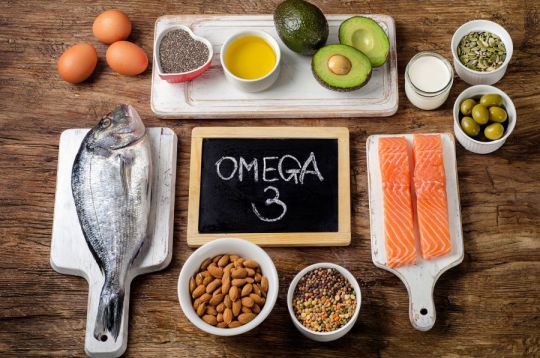
Omega-3 fatty acids are important fats that reduce inflammation, triglycerides, and even the risk of dementia, as well as improving mental ability and memory and preventing premature aging.
The most well-known sources of omega-3 fatty acids include fish oil and fatty fish such as salmon, salmon, and tuna. But omega-3 intake can be challenging for vegans, vegetarians, or even those who are not interested in eating fish sources.
Of the three main types of omega-3 fatty acids, plant foods typically contain only alpha-linolenic acid (ALA).
Alpha-linolenic acid is not active in the body and must be converted into two other forms of omega-3 fatty acids, eicosapentaenoic acid (EPA) and docosahexaenoic acid (DHA) in order to benefit from its properties. But unfortunately, the body's ability to convert alpha-linolenic acid is limited. Only about 5% of alpha-linolenic acid is converted to eicosapentaenoic acid, while less than 0.5% is converted to docosahexaenoic acid. As a result, vegetarians or vegans should make sure they consume enough food rich in alpha-linolenic acid to meet their omega-3 needs.
Remember to pay attention to the ratio of omega-6 to omega-3, as a diet low in omega-3 but high in omega-6 can increase inflammation and the risk of disease.
Due to their many properties, chia seeds deliver a heavy dose of fiber and protein to the body with each serving. They are also an excellent plant-based source of the omega-3 fatty acid ALA.
Thanks to their omega-3s, fiber and protein, studies have shown that chia seeds can reduce the risk of chronic disease when consumed as part of a healthy diet. One study found that consuming a diet with chia seeds, soy protein, and oats reduced blood triglycerides, glucose intolerance, and inflammatory markers.
A 2007 study found that eating chia seeds lowers blood triglycerides and increases good HDL cholesterol and omega-3 levels in the blood. Just 28 grams of chia seeds can meet the daily intake of omega-3 fatty acids of 4915 mg.
The recommended amount of ALA for adults over 19 years of age is 1100 mg for women and 1600 mg for men. Increase your chia seed intake by eating a hearty chia pudding or sprinkling chia seeds on salads, yogurt or smoothies.
Ground chia seeds can also be used as a vegan substitute for eggs. Mix one tablespoon (7 grams) with 3 tablespoons of water for a good egg-based meal.
Summary
28 grams of chia seeds provide 4915 mg of the omega-3 fatty acids ALA, which is 307-447% of the recommended daily amount.
2. Brussels sprouts
In addition to being high in vitamin K, vitamin C, and fiber, Brussels sprouts are an excellent source of omega-3 fatty acids.
Because cruciferous vegetables like Brussels sprouts are so rich in nutrients and omega-3 fatty acids, they also have other great benefits. In fact, one study found that increased consumption of cruciferous vegetables was associated with a 16% lower risk of heart disease.
Half a cup or 44 grams of Brussels sprouts contains about 44 milligrams of ALA. On the other hand, cooked Brussels sprouts contain three times more omega-3. That's 135 milligrams per half-cup serving (78 grams).
Brussels sprouts can be roasted, steamed or fried in food.
Summary
Each half-cup or 78-gram serving of cooked Brussels sprouts contains 135 mg of ALA, or 12% of the recommended daily value.
3. Seaweed
Algal oil, an oil derived from algae, is one of the few plant sources of eicosapentaenoic acid (EPA) and docosahexaenoic acid (DHA). Some studies show that it is comparable to seafood in terms of availability of EPA and DHA nutrients.
One study compared algal oil capsules with cooked salmon and found that both were equally absorbed.
Algae oil supplements, usually available in oil capsule form, typically provide 400-500 mg of DHA and EPA. In general, a daily intake of 300-900 mg of combined DHA and EPA is recommended.
Of course, liquid and powdered forms of algae are also available that can be added to drinks or smoothies for a dose of healthy fats.
Summary
Depending on the supplement, algal oil provides 400-500 mg of DHA and EPA, meeting 44-167% of the recommended daily amount. Liquid and powder types of seaweed are also available.
4. Cannabis seeds
In addition to protein, magnesium, iron and zinc, hemp seeds consist of about 30% oil and contain a large amount of omega-3. Studies have shown that omega-3 found in hemp seeds can be beneficial for heart health. These seeds do this by preventing the formation of blood clots and helping the heart recover after a heart attack. Each 28 grams of hemp seeds contains approximately 6000 mg of ALA.
Sprinkle hemp seeds on yogurt or mix them into a smoothie for a little crunch and boost the omega-3 content of your snack.
You can also use hemp in your homemade granola and benefit from its properties. The use of hemp oil can also be used to provide a concentrated dose of omega-3 fatty acids. Consuming raw or roasted hemp seed is also possible, but due to its hard shell, it is recommended to take care of your teeth.
Summary
28 grams of hemp seeds contain 6000 mg of omega-3 fatty acids ALA, or 375-545% of the recommended daily amount.
5. Walnut
Walnuts are full of healthy fats and omega-3 ALA fatty acids. In fact, walnuts are about 65% fat by weight.
Several studies have shown that walnuts can help improve brain health due to their omega-3 content. A 2011 study found that eating walnuts was associated with improvements in learning and memory.
Another study found that walnuts significantly improved memory, learning, motor development, and anxiety in people with Alzheimer's disease. Just one serving of walnuts can meet the entire day's need for omega-3 fatty acids, with 28 grams providing 2,542 milligrams.
Add walnuts to your homemade granola or cereal, sprinkle them on top of yogurt, or simply eat a handful as a snack to boost your ALA intake.
Summary
28 grams of walnuts contain 2542 mg of omega-3 fatty acids ALA, or 159-231% of the recommended daily amount.
6. Flax seeds
Flaxseeds are great sources full of nutritious properties that provide adequate amounts of fiber, protein, magnesium and manganese in each serving. They are also an excellent source of omega-3.
Several studies have shown that the omega-3 fatty acid content in flaxseeds helps with heart health. Also, studies on flaxseed and flaxseed oil show a reduction in blood cholesterol. Another study found that flaxseed can significantly lower blood pressure, especially in those with high blood pressure.
28 grams of flaxseeds contain 6388 milligrams of omega-3 fatty acids ALA, which exceeds the daily recommended amount.
Flaxseeds are easy to incorporate into your diet and can be a staple in vegan recipes. Mix one tablespoon (7 grams) of flaxseed meal with 2.5 tablespoons of water for a healthy egg substitute in your diet.
In addition to its equality in the properties of cereal and oatmeal, flax seed is perfectly suitable for use in soup or salad.
Summary
28 grams of flaxseeds contain 6388 mg of omega-3 fatty acids ALA, or 400-580% of the recommended daily amount.
7. Soya
Soybean is one of the popular legumes whose origin is known in Asia. Food sources derived from soybeans, such as soybean oil, are a good source of other nutrients, including riboflavin, magnesium, potassium, folate, and vitamin K.
Soybean is usually served as part of a meal or salad, and its oil is well used in cooking and salad dressings. Soybean oil contains 0.923 grams of ALA per tablespoon. Tofu cheese is another food source derived from soy.
Summary
Soy is one of the sources of omega-3, and products derived from it, such as soybean oil, contain 0.923 grams of ALA per tablespoon.
last line
The benefits of omega-3 fatty acids are very important and are an important part of the diet. Consuming this substance improves mental ability and memory, prevents premature aging, etc.
If you follow a vegetarian or vegan diet, you can still use the benefits of omega-3 fatty acids in your diet. It is possible to meet your needs without seafood by including a few plant-based sources of omega-3s in your diet or choosing a plant-based omega-3 supplement and capsule. These 7 plant sources rich in omega-3 fatty acids will help you get this essential substance.
0 notes
Text
Unveiling the Secrets of Healthy Eyes
Introduction
Welcome to a journey of discovering the secrets to maintaining healthy eyes. Our eyes play a vital role in how we perceive and experience the world around us. As the window to our soul, it is crucial to keep them in the best condition possible. This comprehensive guide will delve into various aspects of eye health, covering practical tips, lifestyle changes, and essential information to ensure optimal eye care.
Understanding the Anatomy of the Eye
Before we dive into eye care, let's explore the intricate anatomy of the eye. The eye is a complex organ that comprises several essential components, such as the cornea, iris, lens, retina, and optic nerve. Each part plays a distinct role in the visual process, and any irregularity can impact our eyesight significantly.
The Importance of Regular Eye Examinations
Regular eye examinations are the cornerstone of maintaining healthy eyes. A comprehensive eye exam conducted by a qualified optometrist can detect early signs of eye diseases and other underlying health conditions. By detecting issues early, appropriate measures can be taken to prevent further complications and preserve clear vision.
Tips for Optimal Eye Health
1. Eat for Your Eyes
A balanced diet rich in nutrients can do wonders for your eye health. Incorporate foods high in antioxidants, such as leafy greens, carrots, and citrus fruits. Omega-3 fatty acids found in fish like salmon and tuna can also support eye health and reduce the risk of age-related vision problems.
2. Stay Hydrated
Proper hydration is essential for overall health, including your eyes. Drinking adequate water can help prevent dry eyes and maintain the moisture needed for clear vision.
3. Practice the 20-20-20 Rule
In today's digital age, we spend prolonged hours staring at screens, which can strain our eyes. To alleviate this, follow the 20-20-20 rule: take a 20-second break every 20 minutes and focus on an object 20 feet away. This simple practice can reduce eye strain and improve overall eye comfort.
4. Protect Your Eyes from Harmful UV Rays
Remember to wear sunglasses that offer 100% UV protection whenever you step outside. Prolonged exposure to UV rays can lead to eye damage and increase the risk of cataracts and age-related macular degeneration.
5. Give Your Eyes Enough Rest
Adequate rest is crucial for maintaining good eye health. Ensure you get enough sleep each night, as this allows your eyes to recover from the day's activities and rejuvenate for the next day.
Common Eye Problems and How to Address Them
1. Myopia (Nearsightedness)
Myopia is a common refractive error where distant objects appear blurry. It can be addressed with prescription eyeglasses or contact lenses, and in some cases, laser eye surgery might be recommended for a more permanent solution.
2. Hyperopia (Farsightedness)
Hyperopia, on the other hand, makes nearby objects appear blurry. Like myopia, hyperopia can be corrected with prescription eyewear or surgery.
3. Astigmatism
Astigmatism is a condition where the cornea's curvature is irregular, causing distorted vision. Corrective lenses, such as toric contact lenses, can help manage astigmatism effectively.
4. Dry Eye Syndrome
Dry eye syndrome occurs when the eyes don't produce enough tears or the tears evaporate too quickly. Artificial tears, lifestyle changes, and the use of a humidifier can offer relief for this condition.
Conclusion
Your eyes are precious, and their health should never be taken for granted. By understanding the anatomy of the eye, adopting healthy habits, and scheduling regular eye exams, you can ensure the best care for your vision. Embrace these simple yet effective tips to unlock the secrets of healthy eyes and enjoy a lifetime of clear sight and visual wonder. Remember, a proactive approach to eye care today can pave the way for a brighter and clearer tomorrow. For More information please Visit www.shrikrishnanetralaya.com
#EyeHealth#HealthyEyes#EyeCare#VisionCare#EyeWellness#EyeExams#EyeAnatomy#NutritionForEyes#HydrationForEyes#DigitalEyeStrain#UVProtection#RestForEyes#Myopia#Nearsightedness#Hyperopia#Farsightedness#Astigmatism#DryEyeSyndrome#ExerciseForEyes#BlueLightEffects#DigitalEyeHealth#EyeHealthTips#ClearVision#EyeSafety#EyeDiseases#EyeProblems#EyeExercises#HealthyHabits#EyeCareTips#ProtectYourEyes
0 notes
Text
How to Build a Balanced Plate for Diabetic-Friendly Meals
In order to control their blood glucose levels, diabetic must understand the significance of a balanced plate. Various foods that offer essential elements including carbs, proteins, and healthy fats are included on a balanced plate.
For diabetics, monitoring carbohydrates is especially crucial because too many of them can elevate blood sugar levels. Instead of completely eliminating carbohydrates, it’s critical to pick the proper ones, such as whole grains, fruits, and vegetables that include fiber that slows digestion and aids in blood sugar regulation. Every meal should also contain protein to help people feel full while promoting muscle growth and tissue repair, both of which are essential for maintaining good health.
Tips for Building Balanced Plates for Diabetic-Friendly Meals
– Choosing the Right Carbohydrates for Your Plate
Different carbs have different benefits. To maintain a balanced and healthy diet, it’s critical to make the appropriate choices for your plate. Choose complex carbs that are high in fiber, vitamins, and minerals, such as whole grains, fruits, and vegetables.

Since simple carbs like sweets and soda can raise blood sugar levels and cause weight gain, they should be consumed in moderation. Consider your carbohydrate choices’ glycemic index as well; foods with a lower glycemic index, such as beans or lentils, digest more slowly and help you feel satisfied for longer. Making educated choices about the carbs on your plate ultimately comes down to considering their nutritional value and impact on your body’s glucose levels.
– Incorporating Lean Proteins for Sustained Energy
Lean proteins are a fantastic method to keep your energy levels steady throughout the day. Protein takes longer to digest than sweet snacks or meals high in carbohydrates, giving you energy steadily over a number of hours. Choose lean foods like chicken breast, fish, tofu, or lentils, which are abundant in nutrients but low in calories and saturated fat.
A protein-rich smoothie made with Greek yogurt and berries or chia seed pudding made with almond milk is an excellent choice for breakfast. Try grilled salmon over a bed of leafy greens for lunch or dinner, or a quinoa salad stuffed with seasonal veggies and garbanzo beans. To maintain sustained energy levels throughout the day and achieve optimal health, remember to balance your diet with a range of food types.
– Adding Healthy Fats to Your Meals
Including healthy fats in your meals can improve your blood sugar levels and general health when it comes to treating diabetes. Although they frequently receive a poor rap, fats are necessary for the body and are critical for the absorption of vitamins and minerals, promoting cognitive function, and lowering inflammation.
When cooking, choose heart-healthy fats like those found in avocados, almonds, and seeds, fatty fish like salmon or tuna, olive oil, or coconut oil. Omega-3 and omega-6 fatty acids, which are present in these choices, enhance insulin sensitivity and reduce the risk of heart disease.
Keep an eye on portion sizes because extra calories from dietary fat should be balanced with the rest of the calories you consume each day. People with diabetes will benefit from adding healthy fats to their meals, as would everyone aiming for optimum health.
– Balancing Your Plate with Fiber-Rich Vegetables
It’s a fantastic idea to fill the center of your plate with veggies high in fiber to make it a delightful and diabetic-friendly dinner. Fibre aids in the slowing down of carbohydrate digestion, reducing the risk of blood sugar rises.
Non-starchy vegetables like broccoli, carrots, or Brussels sprouts and lean proteins like grilled chicken or fish should be found on a balanced dish. Try roasting your vegetables in olive oil to add flavor and good fats, or sprinkle some nuts or seeds on top. Additionally, don’t overlook the significance of being hydrated; sipping on water prior to and during meals will help you feel filled for longer and curb overeating. It’s possible to put together a balanced dish that pleases your palate and your nutritional requirements with a little imagination and planning.
Source :- https://worldhealthupdates.com/how-to-build-a-balanced-plate-for-diabetic-friendly-meals/
1 note
·
View note
Video
youtube
7 Effective Ways to Lower Cholesterol Naturally || How To Lower Choleste...
7 Effective Ways to Lower Cholesterol Naturally: We understand the importance of maintaining healthy cholesterol levels for overall well-being. High cholesterol levels can increase the risk of cardiovascular diseases, which is why it's crucial to take proactive steps to reduce cholesterol naturally. In this article, we will discuss seven effective ways to lower cholesterol without the use of medication, providing you with valuable insights and practical tips to improve your cardiovascular health.
1. Embrace a Heart-Healthy Diet: A balanced and heart-healthy diet is a key factor in maintaining optimal cholesterol levels. Incorporating the following foods into your daily meals can significantly reduce cholesterol levels:
Fiber-rich Foods: Increase your intake of soluble fiber found in fruits, vegetables, legumes, and whole grains. Soluble fiber helps lower LDL (bad) cholesterol by binding to it and aiding in its removal from the body.
Healthy Fats: Opt for unsaturated fats, such as those found in olive oil, avocados, nuts, and seeds. These fats can help increase HDL (good) cholesterol while decreasing LDL cholesterol.
Omega-3 Fatty Acids: Include fatty fish like salmon, tuna, and mackerel in your diet. Omega-3 fatty acids have been shown to reduce inflammation and lower cholesterol levels.
2. Maintain a Healthy Weight: Excess weight, particularly around the waistline, can contribute to higher cholesterol levels. By adopting a healthy lifestyle that includes regular physical activity and a well-balanced diet, you can achieve and maintain a healthy weight. Aim for at least 30 minutes of moderate-intensity exercise most days of the week to support your weight management goals and improve your cholesterol profile.
3. Get Moving with Regular Exercise: Engaging in regular physical activity has numerous benefits, including lowering cholesterol levels. Incorporate aerobic exercises like brisk walking, cycling, swimming, or jogging into your routine. These activities not only improve cardiovascular health but also help raise HDL cholesterol and lower LDL cholesterol.
4. Limit Saturated and Trans Fats : To effectively reduce cholesterol, it is important to minimize the consumption of saturated and trans fats. These unhealthy fats can raise LDL cholesterol levels, contributing to heart disease. Limit your intake of processed foods, fried foods, fatty meats, and full-fat dairy products. Opt for lean proteins, low-fat dairy, and healthier cooking methods such as baking, grilling, or steaming.
5. Increase Antioxidant-Rich Foods: Antioxidants play a crucial role in protecting your body from oxidative stress and reducing cholesterol oxidation. Incorporate antioxidant-rich foods into your diet, including:Berries: Blueberries, strawberries, and raspberries are excellent sources of antioxidants that can improve cholesterol levels.Dark Chocolate: Enjoy a small amount of dark chocolate (at least 70% cocoa) as it contains antioxidants called flavonoids, which have been shown to positively impact cholesterol.
6. Quit Smoking for Improved Cholesterol Levels: Smoking not only damages your lungs but also negatively affects cholesterol levels. Quitting smoking is one of the most beneficial steps you can take to improve your overall health, including your cholesterol profile. Seek support from healthcare professionals, join smoking cessation programs, and consider alternative therapies to quit smoking successfully.
7. Manage Stress Levels: Chronic stress can impact cholesterol levels and increase the risk of heart disease. Find healthy ways to manage stress, such as practicing mindfulness, engaging in relaxation techniques like yoga or meditation, and pursuing hobbies or activities that bring you joy. Managing stress effectively can have a positive impact on your cholesterol levels and overall well-being.
Conclusion: By following these seven effective strategies, you can take control of your cholesterol levels naturally. Incorporate heart-healthy foods into your diet, maintain a healthy weight, engage in regular exercise, and make lifestyle changes to reduce stress. Remember, consistency is key, and with time, these habits will become second nature, resulting in improved cholesterol profiles and a healthier you. Implementing these strategies will not only improve your cholesterol levels but also enhance your overall health and well-being.
We are committed to providing you with accurate information and valuable insights. Take charge of your cardiovascular health today and start implementing these lifestyle changes for a healthier future.
Disclaimer Please Note: The content provided in this article is for informational purposes only and should not be considered as medical advice. Please consult with a healthcare professional for personalized guidance on managing your cholesterol levels.
Read More : Easiest Way To Maintain A Healthy Digestion
#youtube#lower cholesterol naturally#heart-healthy diet#reduce cholesterol levels#cardiovascular health#cholesterol-lowering tips#natural cholesterol management#cholesterol-lowering foods#physical activity for cholesterol#stress management and cholesterol#quitting smoking and cholesterol#healthy lifestyle for cholesterol control
0 notes
Text
What are the recommended foods to consume during your menstrual cycle?
The Impact of Diet on Menstrual Symptoms
Surprisingly, the food you consume can have an impact on your menstrual cycle and related symptoms. Including certain foods in your diet can help alleviate period symptoms, while others can worsen them. Opting for nutrient-rich foods that are abundant in vitamins and minerals like iron and magnesium can help prevent iron deficiency. On the other hand, it's advisable to steer clear of foods that can contribute to bloating and inflammation, such as processed foods and sugary treats.
Top Foods to Include in Your Diet During Menstruation
Hydration
Staying hydrated is crucial during menstruation as it helps alleviate symptoms like headaches, fatigue, bloating, and water retention. Aim to drink at least eight glasses of water per day.
Ginger
Incorporate ginger into your diet as it possesses anti-inflammatory properties that can reduce uterine cramps. It is also effective in relieving nausea. Consume ginger candy or drink ginger tea in moderation (around 4 grams per day).
Chicken
Lean sources of protein like grilled chicken are beneficial throughout the menstrual cycle. Chicken is rich in natural iron and helps alleviate period cramps. Avoid fried chicken and other high-fat foods that can disrupt hormone levels.
Fish
Include fish such as salmon, tuna, or oysters in your diet. These varieties are rich in Omega-3 fatty acids, which act as antioxidants and reduce inflammation. Omega-3 helps relax the uterus, alleviating period cramps.
Turmeric
Turmeric is a natural anti-inflammatory spice that helps prevent painful uterine contractions. Take 50-200mg of turmeric daily outside of menstruation, and consider increasing the dosage during your period to combat cramping and pain.
Quinoa
Quinoa is a nutrient-rich grain that contains iron, magnesium, protein, and vitamin B-12. It helps regulate mood, boosts energy levels, and maintains a healthy blood sugar level due to its high fiber content.
Yogurt
Yogurt helps regulate calcium levels, reducing bloating and mood swings during menstruation. It also aids in muscle relaxation. Additionally, consuming yogurt can promote the growth of beneficial bacteria, which helps fight yeast infections associated with periods.
Foods to Limit or Avoid During Menstruation
Excessive Sodium
Limit your intake of salt during your period as it can lead to fluid retention and bloating. High sodium levels can also exacerbate cramping. Focus on hydrating your body instead of dehydrating it further.
Caffeine
Although caffeine provides a temporary energy boost, it is not ideal during your period. Studies suggest that caffeine can worsen premenstrual syndrome (PMS) symptoms. Additionally, the acidity in coffee can increase intestinal irritation, leading to diarrhea and potential dehydration.
Added Sugar
Consuming high amounts of sugar increases inflammation in the body and raises blood sugar levels. This can intensify menstrual cramps and discomfort. Opt for natural sugars found in fruits instead.
Alcohol
Moderate alcohol consumption is generally considered safe, but heavy drinking during your period can amplify PMS symptoms. Alcohol can also affect hormone levels, potentially causing mood swings. Practice moderation and be mindful of your body's response.
Tips for Managing and Relieving Period Symptoms
Period Underwear
Period underwear has gained popularity as a natural and eco-friendly alternative to pads and tampons. Available in various absorbency levels, period underwear offers convenience and eliminates the need for frequent trips to the store. Simply wash and reuse them, reducing waste and the risk of toxic shock syndrome.
Heat Therapy
Applying heat patches to your abdominal area can provide relief from menstrual cramps. These adhesive patches deliver consistent heat for up to 12 hours, helping to relax muscles and alleviate pain. However, it's important not to use heat patches while sleeping.
Exercise
Despite feeling less motivated, engaging in regular exercise during your period can offer significant benefits. Exercise releases endorphins, which boost mood and reduce cramping by improving blood flow. Choose activities that you enjoy and adjust the intensity to your comfort level.
In conclusion, with a balanced diet, heat therapy, and alternative period products like period underwear, you can better manage your menstrual symptoms and go about your daily activities with minimal disruption. Additionally, making eco-friendly choices such as using reusable menstrual products helps reduce waste and lowers the risk of infections.
0 notes
Text
The Link Between Cognitive Development and Omega 3

As we age, it is essential to take care of our health and well-being in order to stay fit and active. Diet and exercise are two key components of a healthy lifestyle that can help us maintain our physical fitness as we grow older. Omega 3 fatty acids are also an important part of any balanced diet, providing numerous benefits such as reduced inflammation, improved heart health, and enhanced cognitive development.
In this article, we will explore how incorporating more Omega 3 into your diet combined with regular exercise can lead to graceful aging. We will discuss the various sources of Omega 3, the health benefits associated with its consumption, as well as tips on integrating more omega-3s into your daily routine.
What is Omega 3 and why it is important
You may have heard the term Omega 3 before, but you might not know exactly what it is or why it's important. Omega 3 is a type of polyunsaturated fat that is essential for good health. It can be found in sources such as fatty fish, nuts, and seeds. Omega 3 is crucial for supporting brain function, aiding in heart health, reducing inflammation, and boosting overall well-being.
Unfortunately, many people don't consume enough Omega 3 in their diets, which can lead to health issues. To ensure you are getting enough Omega 3, consider incorporating foods high in this important nutrient into your diet or taking a supplement.
Sources of Omega 3 fatty acids
Omega-3 fatty acids are essential fatty acids that are important for maintaining good health. They play a crucial role in brain function, cell growth, and reducing inflammation in the body.
To get enough of these important fats, it's important to include foods that are rich in omega-3 fatty acids into our diets. Some of the best sources of omega-3s include fatty fish like salmon, tuna, and mackerel, as well as nuts and seeds like chia seeds and flax seeds.
Other sources include algae oil and eggs enriched with omega-3s. It's important to aim for at least two servings of omega-3-rich foods per week to ensure you're meeting your daily intake requirements. By incorporating these foods into your diet, you can reap the many health benefits that omega-3s have to offer.
Health benefits of Omega 3, including reduced inflammation, improved heart health, and cognitive development
Omega 3 is a highly beneficial nutrient that has been linked to a wide range of health benefits. One of the primary benefits of Omega 3 is its ability to reduce inflammation, which can help ease pain and swelling associated with conditions such as arthritis. Additionally, research has shown that consuming Omega 3 can lead to improved heart health by reducing the risk of heart disease.
Furthermore, Omega 3 has been linked to improved cognitive development, with studies showing that it can improve memory, reasoning, and overall brain function. Overall, incorporating Omega 3 into your diet can have numerous positive effects on your health.
Link between cognitive development and Omega 3
Research has shown a fascinating link between omega-3 fatty acids and cognitive development. These essential fatty acids, found in fish, nuts, and seeds, are crucial for healthy brain function and development.
In fact, omega-3s play a critical role in the growth and maintenance of brain cells and the neural connections that allow for learning and memory. Studies have also linked inadequate levels of omega-3s to impaired cognitive function and an increased risk of age-related cognitive decline.
Given the importance of cognitive health throughout the lifespan, ensuring adequate consumption of omega-3s is an essential aspect of maintaining brain function and cognitive development.
What is Ramsay Hunt Syndrome and why is it compared to Bell's Palsy?
Ramsay Hunt Syndrome is a rare condition that affects the nerves in the face. It is caused by the same virus as shingles, which leads to inflammation of the facial nerves.
This inflammation leads to a variety of symptoms, including facial weakness or paralysis, ear pain, and a rash around the ear. It is often compared to Bell's Palsy, another condition that causes facial paralysis.
However, there are some key differences between the two, such as the presence of a rash and the involvement of additional nerves in Ramsay Hunt Syndrome. While both conditions can be treated, it is important to be aware of the differences between them in order to receive the appropriate treatment.
Tips to help seniors stay fit and healthy
As we age, it becomes increasingly important to prioritize our physical health. Staying active not only promotes longevity, but can also improve mood, cognitive function, and overall quality of life.
For seniors looking to maintain their fitness, there are a variety of tips and approaches to consider. Gentle exercises such as yoga, swimming, and walking are excellent low-impact options, while weightlifting and resistance training can help maintain muscle mass and prevent injury.
It's also crucial to prioritize a balanced diet, including nutrient-dense foods such as vegetables, fruit, lean proteins, and whole grains. Finally, regular check-ins with a primary care physician can help ensure that all aspects of one's health are being properly to maintain fit and healthy.
1 note
·
View note